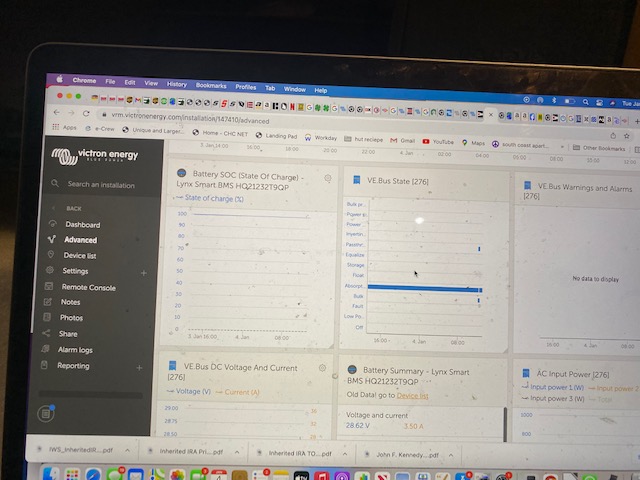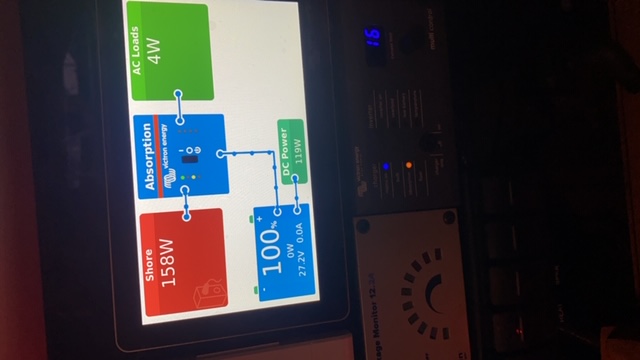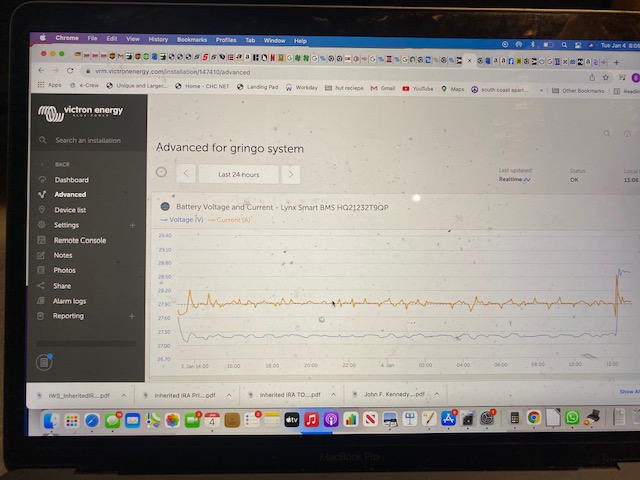Hello ,
My set up , i have just finished my install and have run into a few bugs/ settings i cant figure out . I
3 x 200 li smart
Lynx smart BMS,
multiplus 5 kw
several lynx distro's and smart battery protects.
Firmware on all devices is currentI have read all the manuals both the GX and Lynx bms. DVCC is forced on .
The BMS is working well, I was super impressed it balanced the batteries on the first charge. when you start charging the GX displays as it should , bulk then goes to Absorbtion at the correct voltages. What is weird is that it will go to a float voltage of 27.2 and float but not indicated float on the GX or the lights on teh multi.



the GX is showing the status of the Mulit not what the status of whet the BMS is doing.
Have i missed something here?
Thanks

